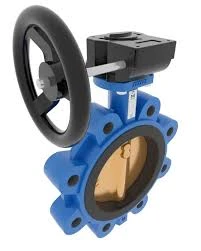10 月 . 21, 2024 18:38 Back to list
Understanding the Functionality of Non-Return Swing Check Valves in Fluid Systems
Understanding Non-Return Swing Check Valves
In various fluid handling applications, the importance of ensuring that the flow of liquids and gases is controlled cannot be overstated. One crucial component often used to prevent backflow in pipelines is the non-return swing check valve. This article will delve into the essence of non-return swing check valves, their working mechanisms, applications, advantages, and maintenance considerations.
What is a Non-Return Swing Check Valve?
A non-return swing check valve, often simply referred to as a swing check valve, is a type of valve designed to permit fluid to flow in one direction while preventing it from flowing back. The valve is composed of a disk that swings on a hinge or pivot point. When fluid flows in the intended direction, the disk opens and allows passage; however, if there is a reverse flow, the disk swings shut, sealing off the flow path.
Working Mechanism
The operation of a non-return swing check valve is quite straightforward. It relies on the momentum of the incoming fluid to open the valve. As the fluid enters, it pushes the disk away from the seat, allowing the fluid to pass. Should the flow direction reverse, the gravitational force and the backpressure from the fluid act on the disk, causing it to swing back onto the seat, effectively closing the valve. This mechanism ensures a simple yet effective way to prevent backflow without the need for external power or controls.
Applications
Non-return swing check valves are utilized in a wide range of industries due to their reliability and effectiveness in maintaining unidirectional flow. Common applications include
1. Water Supply Systems In municipal water systems, these valves are crucial for preventing backflow, which can lead to contamination of drinking water.
2. Sewage and Wastewater Systems They protect treatment plants from potential backflow of sewage, thereby maintaining operational integrity.
3. Oil and Gas Industry Used in pipelines and storage tanks, swing check valves prevent reverse flow that could harm equipment or cause spills.
4. HVAC Systems These valves help in regulating the flow of hot and cold fluids in heating and cooling systems.
5. Irrigation Systems Non-return swing check valves ensure that irrigation lines function efficiently without the risk of reverse flow.
Advantages
non return swing check valve

The non-return swing check valve offers several advantages
- Simple Design Their uncomplicated design makes them easy to install and maintain.
- Low Pressure Drop This type of valve typically has a lower pressure drop compared to other check valves, promoting energy efficiency.
- Versatility Swing check valves can be used in various applications, accommodating different fluid types and pressures.
- Cost-Effective Generally, they are less expensive than many other valve types due to their straightforward design and materials.
Maintenance Considerations
While non-return swing check valves are generally low-maintenance, certain best practices can prolong their lifespan and efficiency
1. Regular Inspections Regular checks for any signs of wear, corrosion, or damage can prevent future issues.
2. Cleaning Keeping the valve and surrounding piping clean can help maintain optimal performance, especially in applications involving sediment or debris.
3. Ensure Proper Installation Correct installation is critical to function. Valves should be installed in the proper orientation (vertical or horizontal) as per the manufacturer's guidelines.
4. Monitoring Flow Conditions Keeping an eye on the flow rates and pressure can help detect any irregularities early on.
Conclusion
Non-return swing check valves serve an essential function in fluid systems by preventing backflow and ensuring smooth and efficient operation across various applications. Their straightforward design and effective functionality make them a favored choice among engineers and operators alike. By understanding their operation, advantages, and maintenance needs, users can make informed decisions about incorporating these valves into their systems, contributing to overall fluid management and safety.
Share
-
Understanding the Differences Between Wafer Type Butterfly Valve and Lugged Butterfly ValveNewsOct.25,2024
-
The Efficiency of Wafer Type Butterfly Valve and Lugged Butterfly ValveNewsOct.25,2024
-
The Ultimate Guide to Industrial Swing Check Valve: Performance, Installation, and MaintenanceNewsOct.25,2024
-
Superior Performance with Industrial Swing Check Valve: The Essential Valve for Any SystemNewsOct.25,2024
-
Industrial Swing Check Valve: The Ideal Solution for Flow ControlNewsOct.25,2024
-
You Need to Know About Industrial Swing Check Valve: Functionality, Scope, and PerformanceNewsOct.25,2024